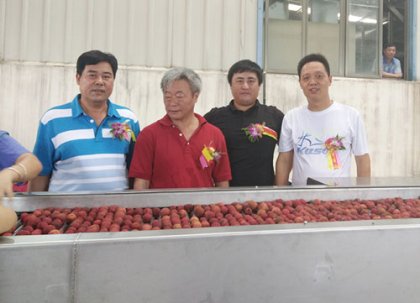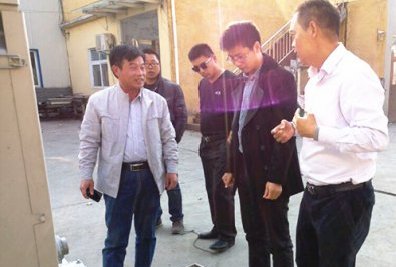How many steps of pretreatment for raw materials in the fruit juice production line?
Fruit juice can be divided into natural fruit juice, fruit juice with flesh, fruit juice concentrate, etc. these beverage have different row materials, but the basic principle and production process are roughly the same. In general, the fruit row material is processed by pretreatment, squeeze, washing, peeling, extracting, juice refining, etc, among which the pretreatment is an important process we cannot ignored. Today, AGICO will give you a detailed introduction about the steps and process of pretreatment.

Washing: after selecting the raw materials, wash with water to remove stains, and then placed in a 1% hydrochloric acid solution or in a detergent solution to rinse again, Remove pesticide residues, then put in clean water rinse, drain.
Cut in half to remove seeds and stones: by using a core-remover.
Soak and color-protecting: soak the fruit raw material in the mixed solution of ascorbic acid and citric acid for color protection.
Heating and pulping: heat the fruit for 3-5 minutes under the temperature of 90℃-95℃, in order to soften the fruit so that they can pass the beater with 0.5mm aperture to beating, remove the peel.
Flavor adjusting: in order to increase the flavor, pulp processed by the above treatment need to be adjusting. During the adjusting of fruit juice production line, it need to be added sugar, citric acid, L-ascorbic acid and other ingredients.
Homogeneous: Homogenization is to split the pulp particles into smaller particles and evenly dispersed in the juice, to increase the stability of the juice and prevent delamination. Homogenization method is to filter the juice through the high pressure homogenization, so that pulp particles and colloidal substances in the fruit juice can through the holes of 0.003 - 0.002 mm under high pressure to become more fine particles. What’s more, colloid mill can also be used for homogeneous. When the juice flows through the gap between 0.075 and 0.05 mm in the colloid mill, the pulp particles in the juice are impacted by the strong centrifugal force to achieve the purpose of homogeneous.
Deaeration: during the process of squeeze juice, oxygen, nitrogen, carbon dioxide and other gases will be mixed into the juice, among them, nitrogen can cause oxidation of vitamin C, pigment and other substances, the corrosion of tinplate cans. Thus, the deaeration is essential.
There are two main methods of deaeration:
-
Vacuum method: fill the juice into vacuum cans, so that the juice can form a micro mist spray and then deaerate. The vacuum degree that vacuum method adopts is 685 - 711mm Hg or above, the temperature is lower than 43.
-
Nitrogen gas exchange method. The juice flows into the top of a vertical glass tube or a stainless steel tube, nitrogen gas is pressed into from the bottom of tube, after adding the nitrogen gas, there will be formed numerous small bubbles, replaced the oxygen in the fruit juice and achieve the purpose of deaeration.
Sterilization and filling: heat the fruit juice to 95℃ for about a minute, and then fill into the can immediately.

Sealing and cooling: keep the container tightly closed, put the container upside down for a minute. After the containers are sealed, immediately cooling them segmented to around 38℃, then storage.
Get in Touch Now!






